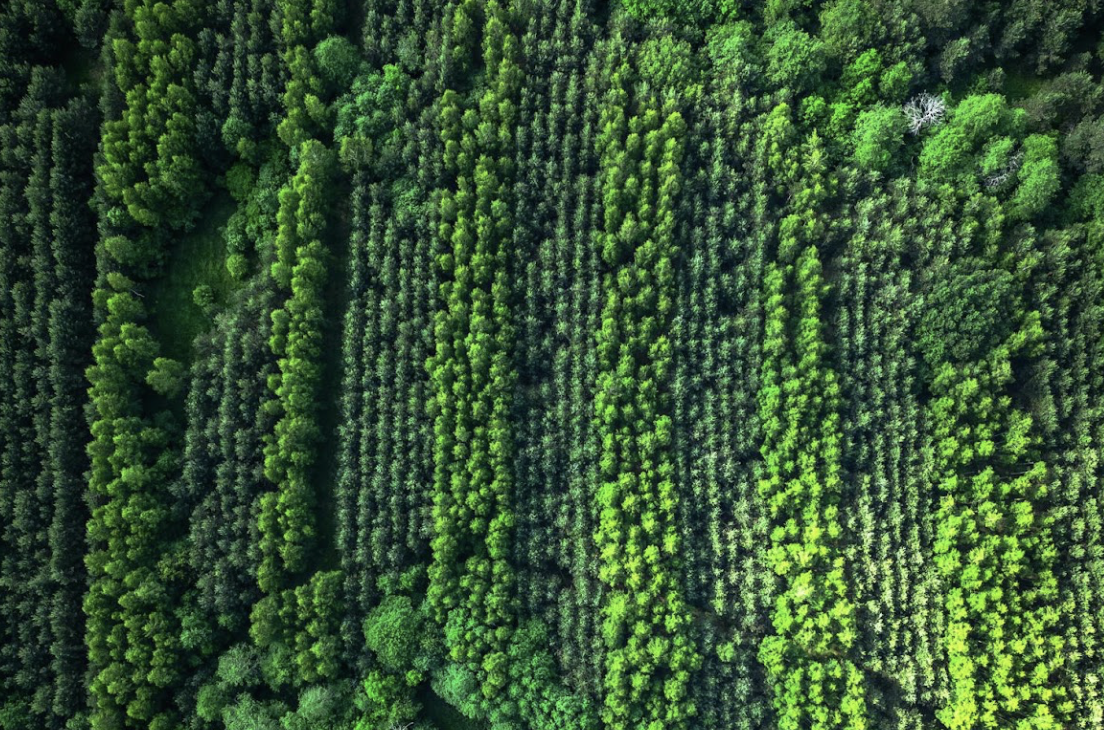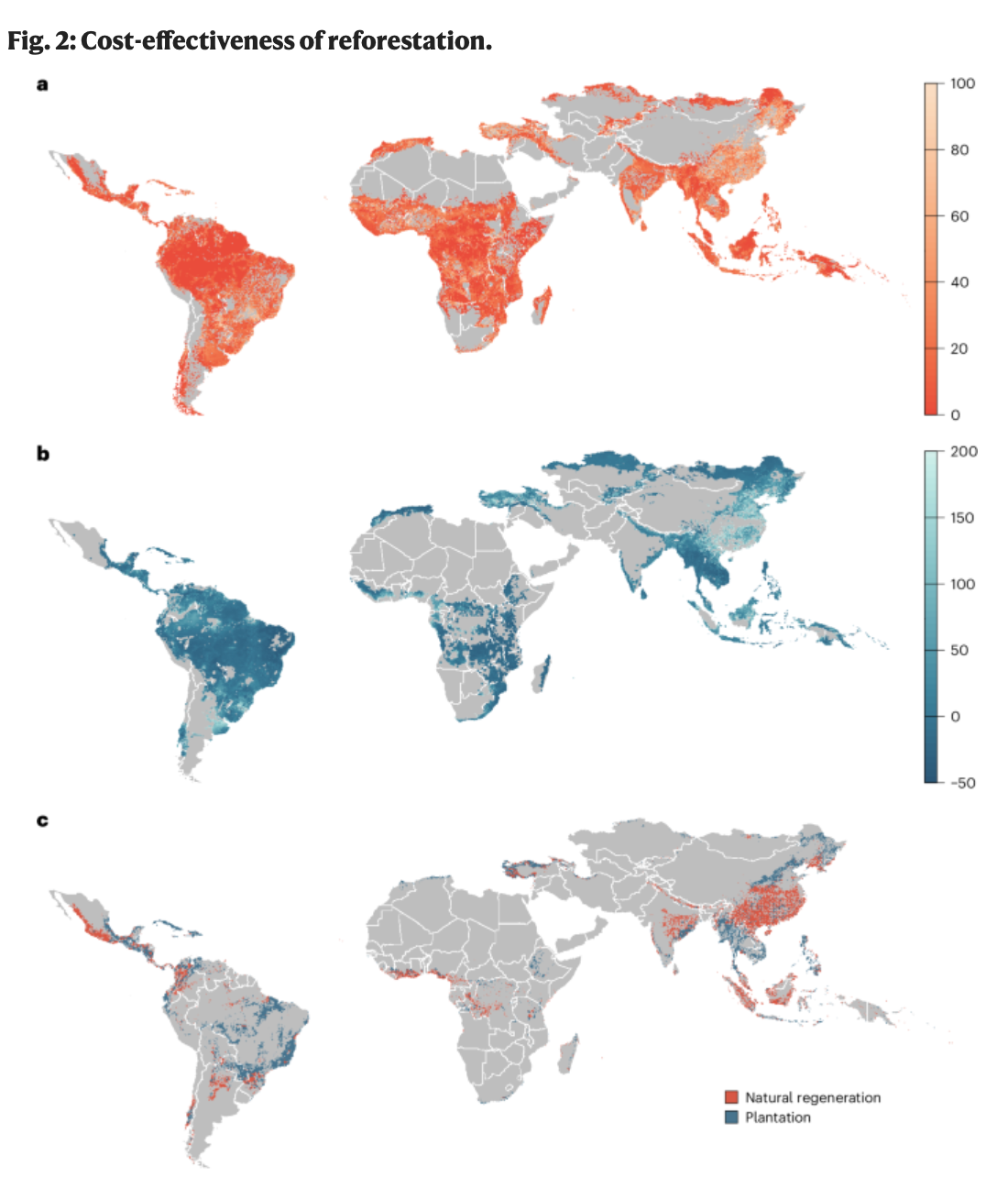Strategic Restoration as Climate Solutions 🌲🌎
"The opportunity for low-cost reforestation appears much more plentiful than previously thought"

Data Reveals Low-Cost Strategies for Forest & Climate Restoration 🌳
Reforestation is one of the best tools against climate change, but many have questioned whether it's truly cost-effective. This new study by Busch et. al. (2024) dives into the affordability of two main reforestation methods: natural forest regeneration and plantation forests across 138 low- and middle-income countries. By choosing the right reforestation method for each location, we can achieve greater GHG reductions at a lower cost.
Co-author Jonah Busch argues that "The opportunity for low-cost reforestation appears much more plentiful than previously thought; this suggests reforestation projects are worth a second look by communities that might have prejudged them to be cost prohibitive.”
Natural Regeneration vs. Plantations 🌱
Let’s break it down:
- Natural Forest Regeneration is when forests are allowed to grow back naturally from existing trees or seeds in the soil with minimal human intervention. This method supports biodiversity, water conservation, and soil health, making it particularly valuable in areas close to existing forests.
- Plantation Forests involve planting and cultivating trees, often (though not always) of the same species, specifically for commercial purposes like timber production or carbon capture. While plantations can generate revenue from wood products, they typically involve more intensive management and in some cases may not support as much biodiversity as naturally regenerating forests. See more here.
The study maps out the cost per ton of GHG abatement for both methods, factoring in costs, carbon accumulation, and revenue from wood products. Natural regeneration shines in regions like Central Africa and Western Mexico, while plantations dominate in the Caribbean and Northern China. Using the best method for each area could boost GHG reductions by 44%!
Curious? Read the study or check out our summary.

Optimizing Global Reforestation Efforts 🌍
To get the most out of reforestation, we need to be strategic. Policymakers and environmental organizations should use spatial data to determine the most cost-effective method for each region. By doing so, we ensure that reforestation efforts are not just effective but also efficient.
The effectiveness of natural regeneration is notable, but this does not mean we should pump the breaks on manual planting methods. On the contrary, Busch writes that "Our research finds that reforestation is considerably cheaper than previous global models have estimated, suggesting that large-scale reforestation initiatives ought to move forward with wind in their sails... whether this reforestation in specific locations takes place through tree-planting or natural regeneration is partly a matter of cost and climate effectiveness".
How would you approach this? Let’s discuss!
Open Data & Code 💻
This study is backed by a wealth of spatial data and models, all publicly available. These resources are key for designing reforestation programs that meet both local and global needs.
Study co-author Jonah Busch opines that "Open data is the cornerstone of modern, transparent science." We couldn't agree more.
Study Cited📖
Busch, J., Bukoski, J.J., Cook-Patton, S.C. et al. Cost-effectiveness of natural forest regeneration and plantations for climate mitigation. Nat. Clim. Chang. 14, 996–1002 (2024). https://doi.org/10.1038/s41558-024-02068-1
Author Socials📇
Jonah M Busch ORCID | Jonah M Busch Nature Portfolio
Jacob Bukowski ORCID | Jacob Bukowski Nature Portfolio
Susan C. Cook Patton Nature Portfolio |
Bronson Griscom ORCID | Bronson Griscom Nature Portfolio
David Kaczan Nature Portfolio |
Matthew D. Potts ORCID | Matthew D. Potts Nature Portfolio
Yuanyuan Yi ORCID | Yuanyuan Yi Nature Portfolio
Jeffrey R. Vincent ORCID | Jeffrey R. Vincent Nature Portfolio




